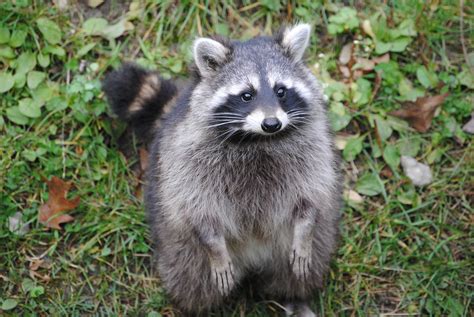South San Francisco, Ca April 27, 2022
Neighbors in South San Francisco have checked in with a concern over rumors of local raccoons with distemper after having heard there was an increased rate of this disease in the area. Reports from the Peninsula Humane Society state that unfortunately, distemper can be common in wildlife and encourage pet owners to keep their pet’s current on their vaccines.
“According to our Animal Control and Wildlife departments, we haven’t had higher than usual reports of deceased raccoons in South San Francisco.” the Peninsula Humane Society and SPCA Communications Manager, Buffy Martin Tarbox, stated. “Our Wildlife department did let me know that they’ve seen a decrease in the numbers of wild animals with distemper, so they are hoping the incidents are declining.”

They may be cute – but PLEASE do not feed the raccoons – Let them remain wild.
Buffy further warned of the dangers of feeding wild animals, noting that shared feeding areas like pet food dishes or bird feeders can be a cesspool of zoonotic diseases. This is important information to those kind-hearted neighbors who insist on feeding the local wildlife – please let them remain wild and forge for themselves. We do not want to have our wildlife looking to our backyards for their food.
Raccoonworld offers this information on the signs of distemper in raccoons, please go to their site directly for more information CLICK HERE:
Canine distemper in raccoons starts slowly, initially appearing as an upper respiratory infection, with a runny nose and watery eyes developing into conjunctivitis (the most visible symptoms). As time wears on, the raccoon can develop pneumonia. The raccoon may be thin and debilitated and diarrhea is a clear symptom. In the final stage of the disease, the raccoon may begin to wander aimlessly in a circle, disoriented and unaware of its surroundings, suffer paralysis or exhibit other bizarre behaviour as a result of brain damage.
Many of these symptoms are indistinguishable from, and therefore often mistaken for, the signs of rabies which can only be determined by laboratory testing.
Raccoon distemper is cyclical and can spread and wipe out entire colonies of raccoons. The disease is transmitted through airborne droplets, direct contact with body fluids, saliva or raccoon droppings.
Feline distemper usually begins suddenly with a high fever, followed by depression, vomiting, anorexia, diarrhea, and a profound leukopenia. The course of the disease is short, rarely lasting over one week, but mortality may reach 100% in susceptible animals. Feline distemper virus is shed in all body secretions and excretions of affected animals. Fleas and other insects, especially flies, may play a role in transmission of the disease
Please be sure to contact our PHS/SPCA should you ever suspect a local wildlife creature is displaying unusual behavior.
PHONE # EDIT: 650-340-7022 ext 414 www.phs-spca.org
Amazingly we’ve seen no raccoons through our yard during this past season. Living near the golf course and with a PGE easement running along our back fence, we’ve usually seen so many (and had an unfortunate doggie meets momma raccoon with babies encounter a few years ago). It’s sad to hear that the raccoons are ill. They’re just trying to survive in this every changing landscape.
Hi Karen,
Please note, the raccoons are NOT ill, per the Humane Society, distemper is actually down in the area. Good to keep all our animals safe!
Thanks.
-ED